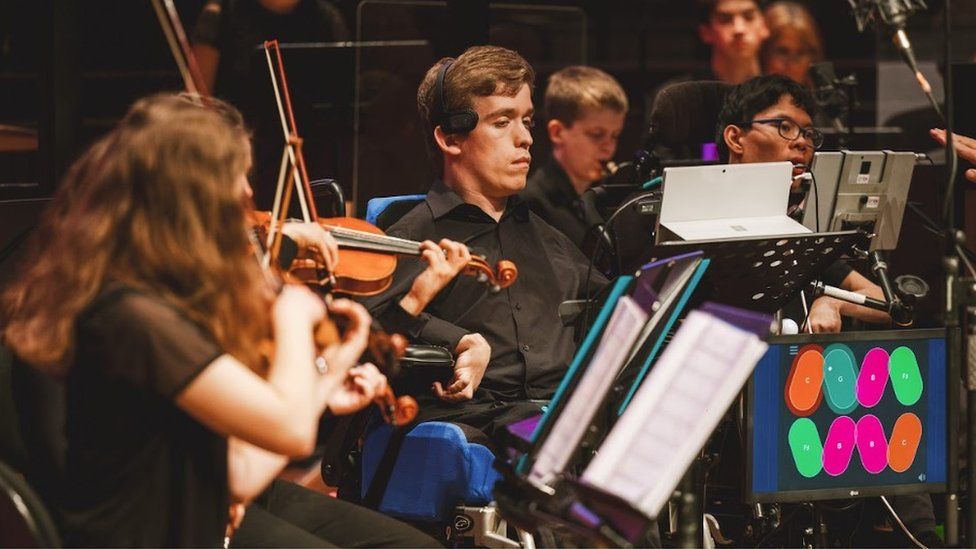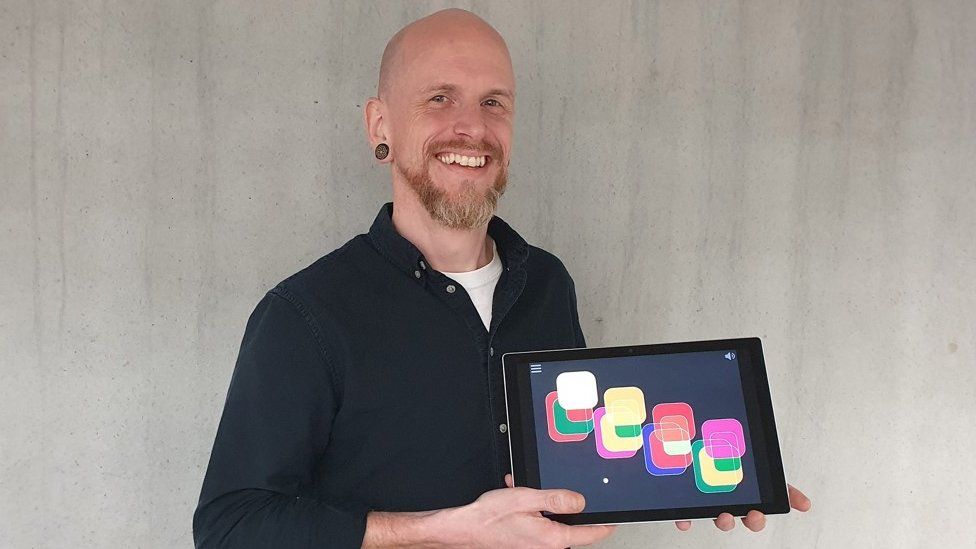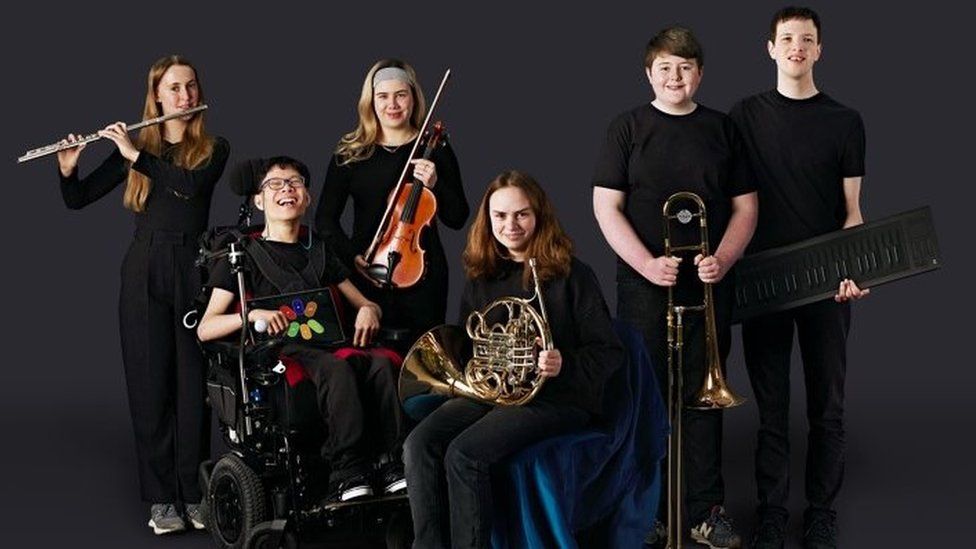
By Kevin Satizabal Carrascal & Beth Rose
BBC Radio 3 & BBC Access All
Music is said to be a language that transcends all others. But traditional instruments are not always as inclusive as they could be. Now, another instrument is about to open up the music scene like no other as it is officially recognised by the classical music world.
Alessandro Vazzana, 26, has been playing music since he was five years old. First the piano, then guitar and drums.
Disabled since birth, he uses an electric wheelchair and has seen a decline in his ability to use his hands. He has Fragile X syndrome resulting in a learning disability which can impact communication, but not his love for music.
When playing his instruments became too physically challenging, he was introduced to the Clarion – an entirely digital instrument which made music accessible once again.
The Clarion is essentially software which can mimic the sound of any instrument you desire and works on technology including iPads, but this doesn’t make it a lesser instrument.
Barry Farrimond-Chuong from Open Up Music is one of the designers behind it and describes the Clarion as “software in the same way that a violin is made of wood”.
“Most musical instruments require two hands and ten very dexterous fingers to play,” he told the Access All podcast. But with the Clarion, you play with the “part of the body that you have the most agency and control over”. That could be eyes, hands, joysticks or even one leg with the help of motion cameras.
“For some young musicians this is the difference between being in control or just being passive recipients of music,” he says.

Allessandro uses head movement to control a wireless pointing device. He is considered one of the best Clarion players and has already performed at London’s Barbican and with the Bournemouth Symphony Orchestra.
“I enjoy playing great music with others,” Alessandro says. “Being part of the group is amazing.”
Rather than using traditional music scores, players create their own visual representation, building up music in blocks with added nuance . The bottom of a block might be quiet, the top loud and individuals can add vibrato and other flourishes as they go, requiring skill and practice.
It might be pre-programmed, but the Clarion is played in real time with the “same sense of jeopardy that you get with a conventional musical instrument,” Barry says. “You can hear any mistakes.”
Barry is behind Open Up Music which runs 60 inclusive orchestras across the country as well as the National Open Youth Orchestra (NOYO) “for young musicians who could feasibly have a career in music, if there were no barriers in the way”.
Alessandro plays in NOYO and the software enables his clarion to blend in with the different orchestral sections and mimic them, but players want more.
“It’s an instrument that’s in search of its own voice,” Barry says, knowing that finding its individuality in a room full of sounds will give it longevity as an instrument.

LISTEN: You can hear what the Clarion sounds like and hear more from Alessandro and Barry on the latest episode of Access All.
And find out more about adaptive instruments on Radio 3’s Music Matters.

He has been working with Clarion players, composers and professional orchestras to see what sound is currently missing from traditional orchestras.
Barry says: “The big picture is that if the Clarion has its own sound, composers can write pieces of music that require Clarions, then orchestras will want to play it and that creates employment.”
Currently, Arts Council England says just 1.8% of professional musicians are disabled compared to the number of disabled UK workers which stands at 19%.
But this month, after discussions on how to legitimise the Clarion as a serious instrument, it has taken another step forward towards the professional sector.
The Associated Board for the Royal Schools of Music (ABRSM) welcomed the Clarion into its family and will offer Open Music Assessments to players from Spring 2024 – in-line with traditional instruments such as violin and flute.
Many people might remember music grades with scales and sight-reading. Open Music Assessments are much more free-flowing. Musicians perform repertoire of their choice and receive constructive feedback instead of passing or failing. It has proved popular with those returning to music or preparing for concerts.
The ABRSM’s James Risdon says Open Music Assessments are “designed to be a very positive, uplifting, affirmative experience” and to provide constructive feedback so the musician can keep improving.

When considering adding Clarion to its offering the ABRSM – which is considered the gold standard of assessment boards – reached out to its 600 examiners to see who might be interested in being involved and was taken aback by the number of positive responses.
When training assessors, it took great care to ensure examiners had the opportunity to play the Clarion and to understand the feedback and comments needed to be constructive and not just positive, to ensure the musician could continue to grow.
James said “As well as providing sensitive and appropriate feedback, we wanted to guard against examiners being swayed by the emotion of the moment, seeing a disabled person performing on a new instrument.”
Open Up Music and ABRSM are both confident the Clarion will eventually transition into its more traditional grading system – but first it needs some music of its own.
There isn’t currently a body of repertoire, but ABRSM is encouraging those on its Composer Mentoring Programme to get writing.
This is something Michael Betteridge has done recently for Alessandro and NOYO. Michael says he was “blown away by how expressive and how beautiful” the instrument was with “opportunities in terms of phrasing and textures”.
James is certain it’s the “beginning of an exciting journey” only set to get better as the Clarion “finds its soul, as it finds its voice”.
The Clarion is currently available http://frutangjeruk.com/ through Open Up Music’s programmes, but from 2024 it will be available to anyone who is interested in music-making and Barry is very keen to see where that takes it.
“I’m really looking forward to watching it burst outside of the orchestra. I want to see a ska band or DJ using it.”